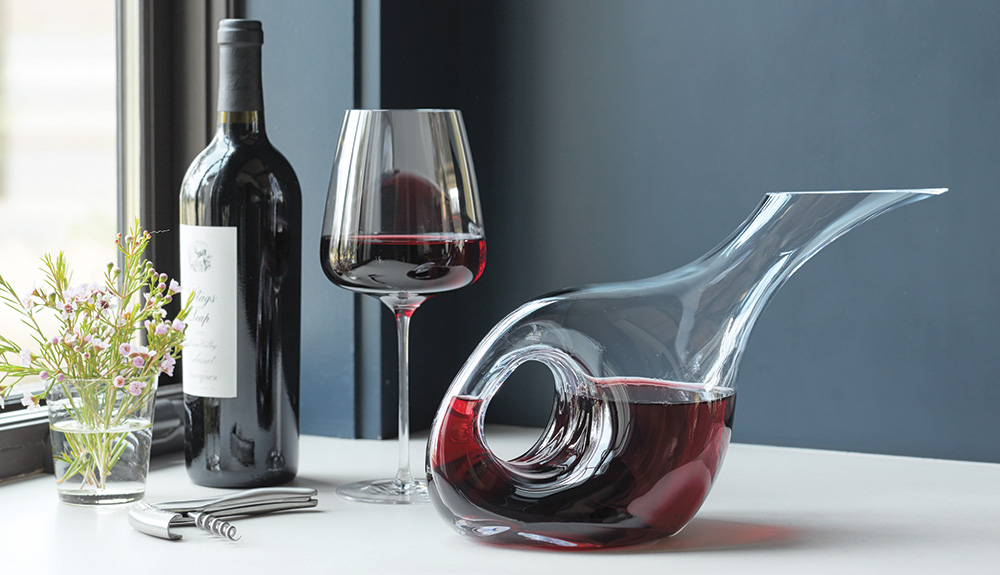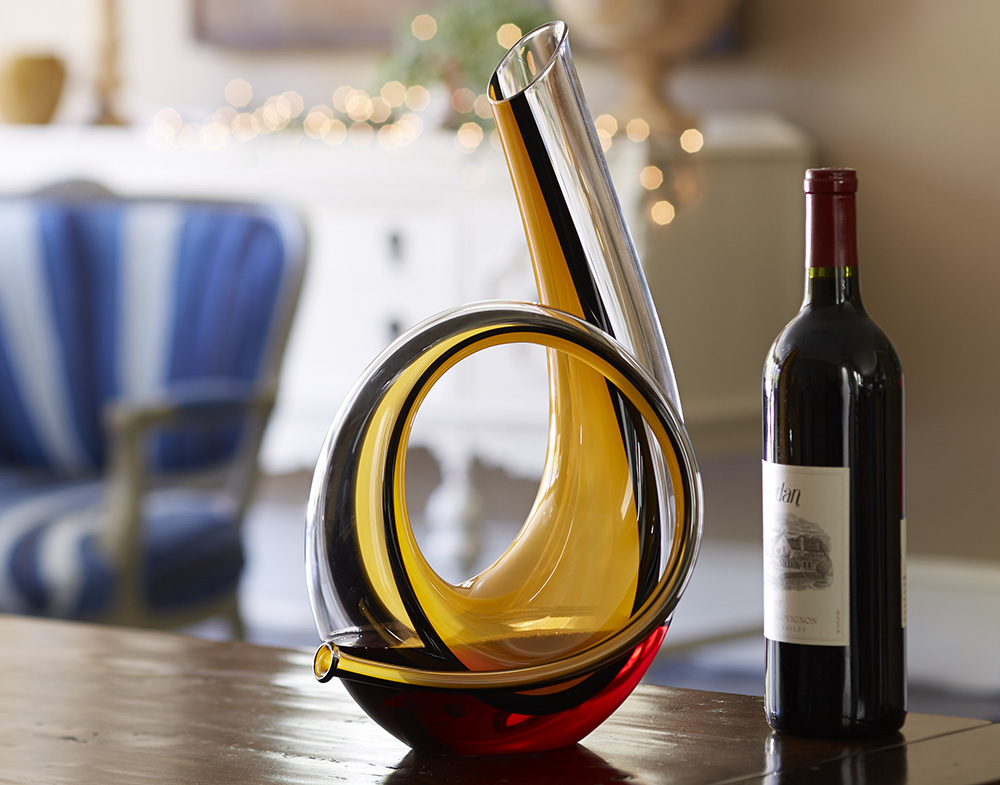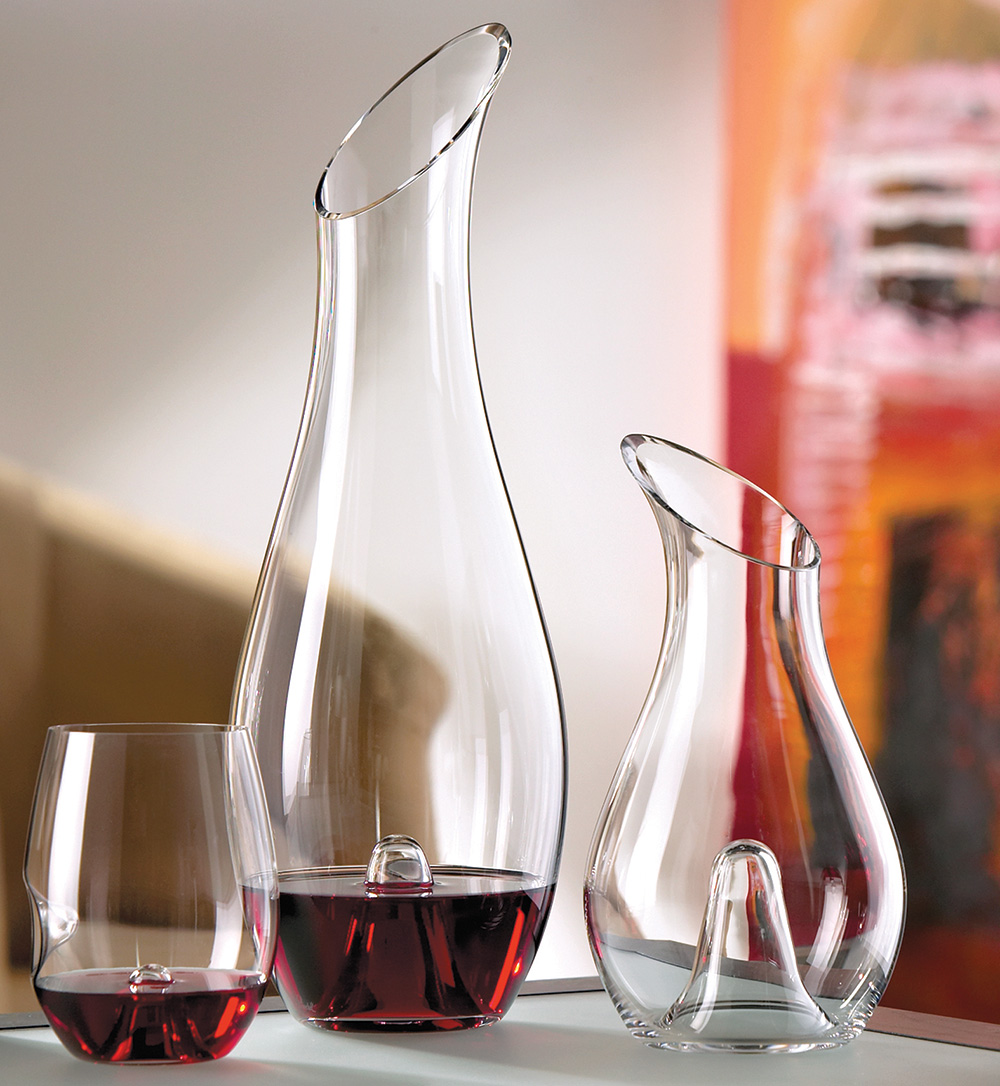
Most experts agree that decanting wine depends largely on the wine’s age and varietal characteristics. Young wines, especially big, bold reds such as Cabernet Sauvignon, Barolo or Syrah benefit from decanting. It dissipates undesirable sulfer-based compounds to allow the fruit characteristics to concentrate and intensify, creating focused aromas and a smoother mouthfeel, making tannins appear softer. To work effectively, the decanter needs to have a lot of surface area, such as the Riedel Ultra Decanter, which combines practicality with aesthetics.

Decanting isn’t adding anything to the wine; instead, it’s subtracting undesirable compounds through dissipation and evaporation. Allowing the wine to sit too long in a decanter can have a detrimental effect. Decanting any wine too far in advance of serving could rob the wine of the very fruit aromas that you are trying to enhance. With a younger wine, you could be left with an overly-oaky and harsh taste as the fruit characteristics oxidize. With older wines, you could end up experiencing wine that is stale, flat and lacking in richness. What is the best way to decant and still hit this elusive sweet-spot?
Allow your wine to settle in an upright position for at least one day for younger wines and preferably as long as four days for wines older than 15 years. This gives the fine particles of sediment time to settle to the bottom of the bottle if you’ve been storing it horizontally.

Plan to open your wine about 90 minutes prior to when you anticipate drinking it. Carefully remove the foil entirely and wipe off the neck of the bottle. Remove the cork without disturbing the wine too much. Start by trying some of the wine straight out of the bottle. If the aromas are intense and flavors are full and rich, the only reason to decant would be to remove any sediment, so you could wait to decant immediately before serving. Go ahead and stick the cork back in and wait until you’re ready to serve it. If on the other hand the wine seems tight, lacking in aromas and fruit character, or has some slight sulfur odors, you should decant well in advance of drinking.
The traditional proper way to decant wine was using a candle under the neck of the bottle to see when sediment starts to pour out. That’s too tricky and messy for modern drinking habits. The new way to decant wine is using a bright flashlight. Shine the beam through the neck of the bottle as you gently and slowly pour from the bottle into the decanter. Stop when you begin to see particles or cloudiness. You should have less than an ounce or two left with sediment which is discarded. An easier method uses a funnel with a very fine screen to filter out all but the smallest sediment particles which will most likely remain in the decanter. The sediment in wine occurs naturally as wine ages and molecules of color and tannins precipitate from the wine. This sediment is harmless but gives wine an undesirable cloudy appearance and could add unpleasant bitter flavors and grittiness.

Most white wines won’t have any sediment unless they haven’t been cold-stabilized, in which case, you may get small tartrate crystals. Some white wines will benefit from decanting, allowing more of the fruit and mineral characteristics to shine through as sulfur compounds and fermentation aromas evaporate. Many people like to decant a white wine simply because it makes for better presentation. In this case, a decanter such as the Riedel Amadeo Decanter makes for an impressive way to serve your white wines.
Whether its to filter out sediment or to open up a young wine, or simply to serve your wine with elegance, there’s an art to decanting and IWA has a great selection of decanters to help you decant in style.
Leaving an older wine upright for several days is new to me. Thanks for the suggestion.
– Henry Veldman